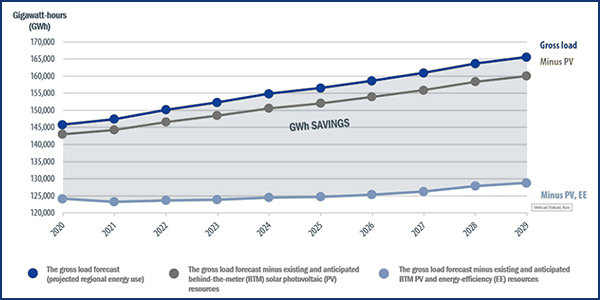ISO-NE will proceed with its proposal to eliminate capacity performance payments for energy efficiency resources, despite its failure to win endorsement by the New England Power Pool Markets Committee.
The RTO announced last month it supported the rule change, which was initially proposed by LS Power. (See ISO-NE to Eliminate Performance Payments for EE.)
The proposal won 55.57% in a sector-weighted vote of the MC on Tuesday, falling short of the 60% threshold for endorsement. The Supplier and Transmission sectors were unanimous in support of the proposal, which also was backed by most members of the Generation sector. It was opposed by a majority of the Alternative Resources and all of the End User members voting. All 49 Publicly Owned Entity members abstained.
In a memo to stakeholders, Henry Yoshimura, the RTO’s director of demand resource strategy, said the change is a recognition that EE resources “permanently reduce energy consumption [and] create a reduction of demand across all conditions and prices.”
Capacity performance payments, which are intended to provide resources with incentives to provide energy or reserves in real time, should be limited “to those resources whose performance could be at risk,” Yoshimura said, citing generators, imports, batteries and demand response. In contrast, EE has no real-time performance and thus can’t trip offline, he said.
Abigail Krich of Boreas Renewables spoke against the proposal, calling it “real slippery slope logic for Pay-for-Performance.”
[Note: Although NEPOOL rules prohibit quoting speakers at meetings, those quoted in this article approved their remarks afterward to explain their positions.]
She said settlement-only generation, most variable generation and all non-dispatchable generation are similar to EE in that “they’re really not able to increase output in response to a scarcity condition,” such as the one that occurred on Sept. 3, 2018.
ISO-NE’s Internal Market Monitor and External Market Monitor backed the change.
“The capacity provided by EE resources during a scarcity condition is not measured,” said David Naughton, manager of surveillance and analysis for the RTO. “It’s also not clear to me that EE resources have the ability to alleviate capacity shortage conditions in real time.”
Pallas LeeVanSchaick of EMM Potomac Economics agreed with Naughton, saying PfP rules are intended to incentivize good performance that is verifiable.
“The nature of energy efficiency is that it’s not really possible to assess performance in the kind of time frame that you need to make PfP work,” he said. “It’s really not a mechanism that’s appropriate for something like energy efficiency.”
LeeVanSchaick also rejected concerns that the loss of the revenue would stifle investment in EE.
Mark Spencer of LS Power urged stakeholders to “take a look at the merits of the argument rather than the emotional issues,” noting the Monitors’ endorsement. “It’s a better market design.”
Spencer also said it was a mischaracterization to suggest the change abrogated a compromise that emerged in the Demand Resources Working Group (DRWG) report after 18 months of stakeholder work. (See “Assessing EE Resource Performance,” NEPOOL Markets Committee Briefs: Sept. 18, 2019.) The MC approved a proposal by the New England States Committee on Electricity with a 94% vote. The proposal, which effectively removed EE from balancing ratio calculations for scarcity events during off-peak hours when EE is not measured, was approved by FERC in July (ER20-1967).
The discussions were prompted by the Sept. 3, 2018, scarcity event during off peak hours, which resulted in capacity performance payment credits exceeding charges by $7.8 million because EE had been eliminated from the numerator of the balancing ratio but not the denominator.
Spencer said the DRWG solution “was not a compromise.” He said stakeholders were faced with the choice of the lesser of two evils, and “that doesn’t result in a durable market design.”
The change left EE with the ability to earn PfP bonuses, or be charged penalties, during peak hours.
Synapse Energy’s Doug Hurley, the leader of the AR sector, did not respond to requests for comment on the MC debate.
Hurley had presented the DRWG solution to the committee in March on behalf of his client, EE aggregator Vermont Energy Investment Corp. “I understand that some participants are frustrated that EE resources are subject to PfP only during DR on-peak and seasonal-peak hours,” he had said. “Our proposal is separate from addressing that issue.”
Calpine’s Brett Kruse said he supported eliminating PfP payments to EE but also agreed with Krich on the need for a broader examination to limit PfP payments to only those resources with “production risk.”
“If something breaks during one of these PfP events, then they’re paying the guys that are there picking up the slack. There are probably some other [resources] that fit much like EE, and those resources should be excluded from the pool as well.”
Yoshimura said ISO-NE will ask FERC to approve the change effective 60 days after the filing is made.




